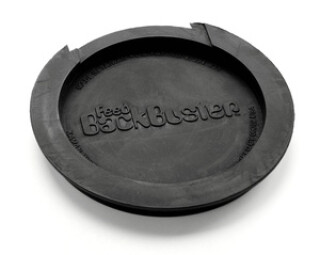Commonly used by electric guitar players, especially to liven things up, feedback is the worst enemy of acoustic musicians. In this series of articles we'll look into the solutions to play a relaxed acoustic set live.
In a perfect world
When the goal is to highlight a virtuoso with a predominantly acoustic accompaniment at low levels, placing a mic in front of the guitar gives excellent ─ if not the best ─ results. Aiming the mic towards the 12th fret, you should get a good sound. Depending on the instrument and the mic, you can move it a bit towards the sound hole to get more bottom end. In this case, dealing with any potential feedback is entirely the job of the sound engineer, who will have to be on guard all the time.
Rock ’n’ roll
Not everybody wants to play five-minute solos in a velvety atmosphere, though, and most guitarists prefer to use an acoustic-electric with a piezo mic and a preamp connected to a DI-box. But even if everything is perfectly suited for a noisy rock-like environment, feedback almost always finds its way to the speakers.
You should obviously avoid pointing the sound hole of your guitar towards the monitors, otherwise, feedback is guaranteed. In the same vein, setting the preamp volume to 0 when you’re not playing the guitar is a simple, but effective, trick.
Nevertheless, even if you are particularly careful or if you sing while you play your instrument and can’t focus your attention on your position, feedback can occur anytime.
Hole in one
A cheap solution consists in using a piece of plastic to cover the sound hole. Manufacturers often give their products pompous names like Feedback Buster or Screeching Halt.
If you are skeptical about them, you can rest assured that the sound of your guitar isn’t altered, and their low price makes it worth it to give one a try.
Cut to the chase!
The preamp of your guitar might have a filter called “Notch, ” which allows you to cut out a narrow frequency band that may be the source of feedback. If that’s your case, you only need to track down the offending frequency by turning the knob until the feedback disappears. Otherwise, there are special acoustic-electric guitar DI pedals, like the BBE Acoustimax or the LR Baggs Para Acoustic that also include a notch filter.
Finally, if you are allergic to piezo mics, or if you still have feedback problems, don’t miss the second installment in this article series where we will deal with alternative transducers…

